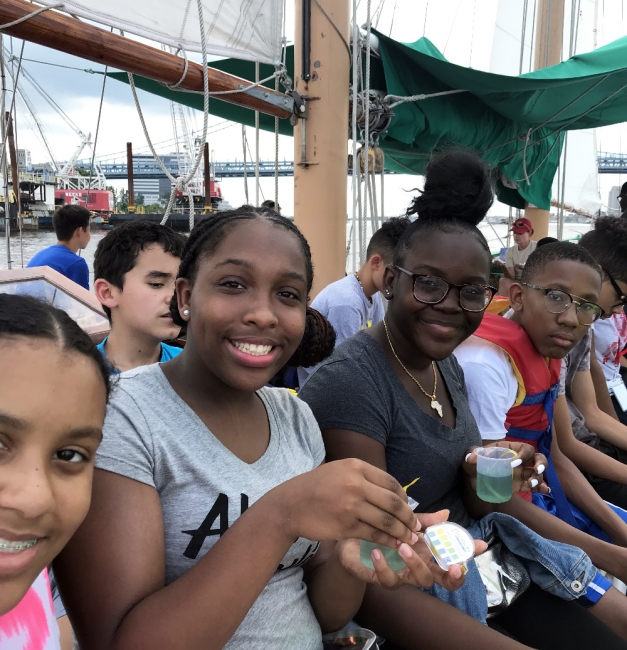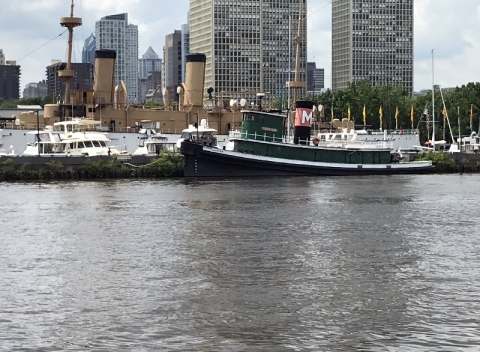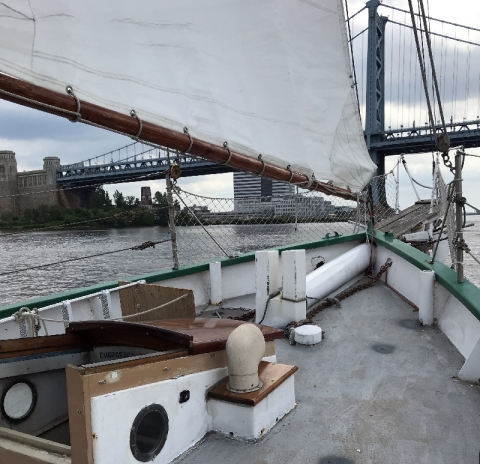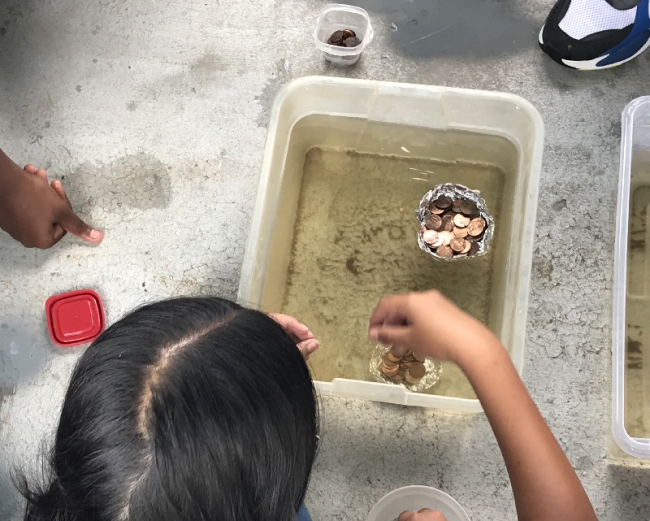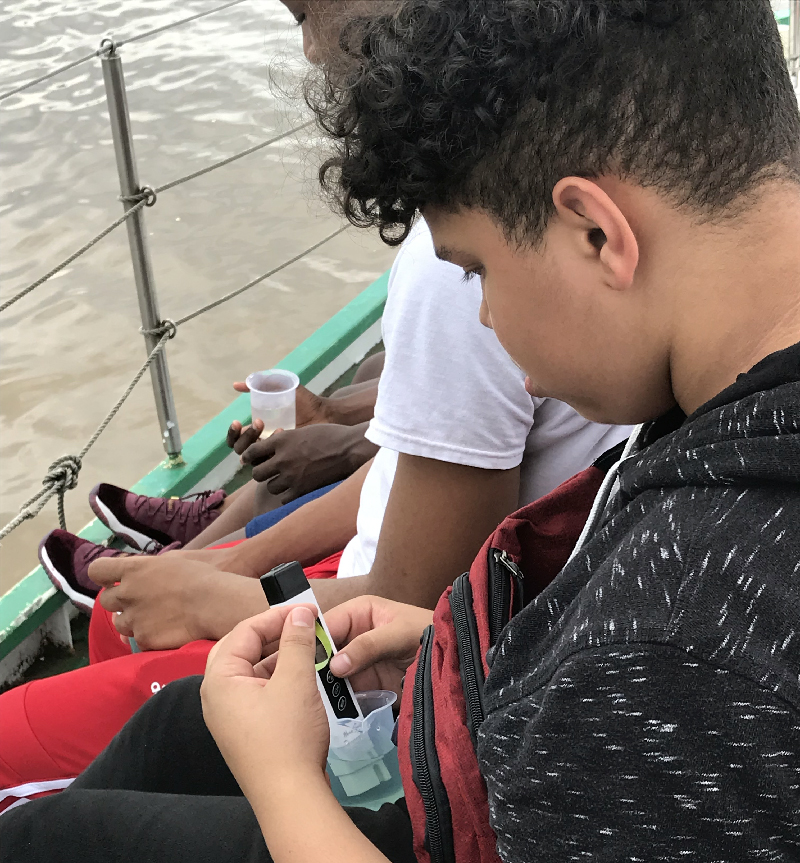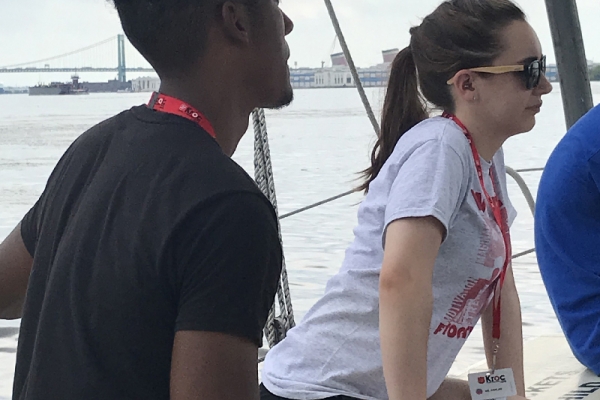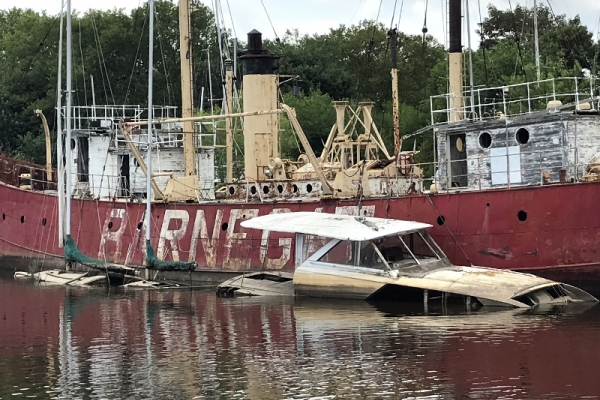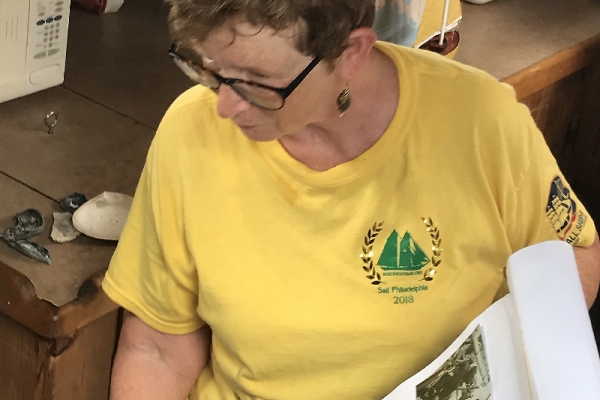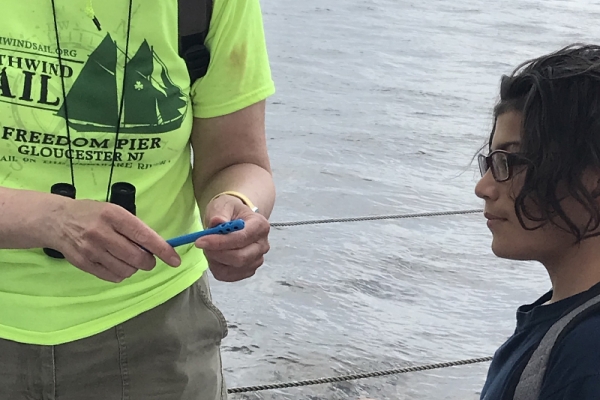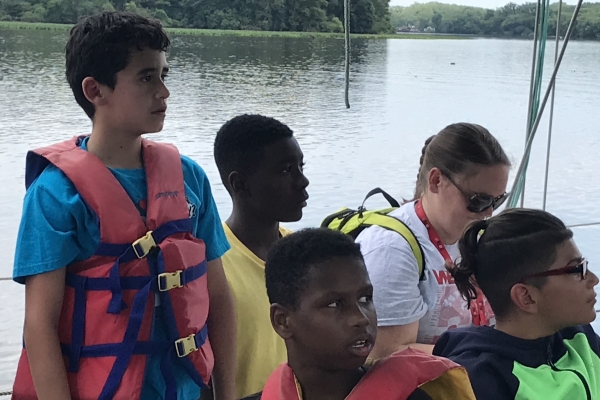On July 3, while visiting in the Philadelphia area, I was invited to join the staff of Gloucester City Sail on the North Wind schooner as a photographer for the day. The nonprofit provides students from local summer programs the opportunity to learn about the waterfronts of Camden, New Jersey, and Philadelphia while on board the schooner, sailing on the Delaware River. They learn about the water quality, the history, and the industries that run along the river, which includes a major port. The 57-foot schooner they use as a classroom was built in 1995 and features five sails.
Originally from Philadelphia, I have always loved the Delaware and through working at NOAA’s Office of Response and Restoration, I have been inspired by the work done by OR&R scientist Simeon Hahn, who works with local partners and other natural resource trustees to assess polluted industrial sites along the water and plan for restoration as part of the Urban Waters Federal Partnership Program. Simeon is committed to the restoration and revitalization of the Delaware waterfront, believing that urban areas sometimes get overlooked in favor of more obvious recreational areas. Urban waterfront restoration gives local kids a chance to experience and learn about the river that is basically in their backyard.
So I was happy to see the waterfront this time from the vantage point of a sailboat on a very hot day with 27 enthusiastic students and their counselors. This group of 13- and 14-year-old students came from a summer program at the Kroc Community Center in Camden.
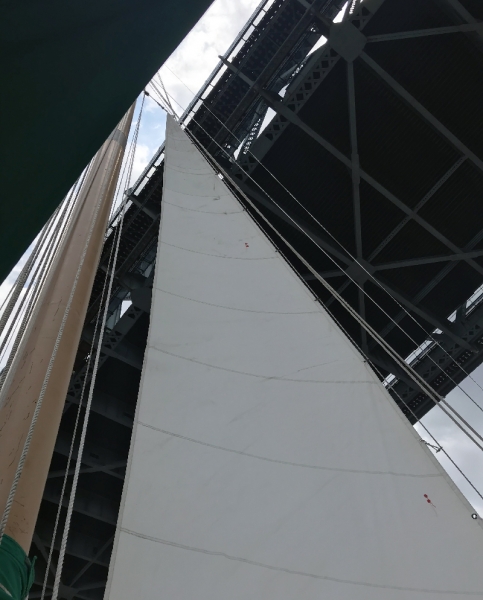
Most of the students had never seen the waterfront from a boat (nor had I), even though they live really close to it. They asked great questions. While going over the safety information as we were leaving the dock, several of the kids asked about falling off the boat, and whether the chemicals or pollution in the water could harm them. Sighting of a floating dead fish prompted a comment on how important it is to take care of our environment.
Soon after we left the dock, we passed by a group of abandoned vessels at the edge of a small bay, out of sight to most anyone not on the water. The site of the dilapidated and mostly sinking boats generated a lot of curiosity. One of the students asked what happens to oil left on board — does it make its way into the water? As someone who works for the NOAA program that addresses just that issue, I thought it was a really insightful question for a 14-year-old to ask.
The kids enjoyed sailing under the enormous Ben Franklin Bridge, which connects Camden and Philadelphia, giving us a view of the underside of the bridge, a different perspective than what most of us were familiar with.
We sailed close to American Water Company on the Camden side of the river, a perfect place to tell the students that most of the water people drink in Camden comes from further north on the Delaware River where there is freshwater. American Water provides water to Camden and the surrounding area.
While underway, the students split into groups and rotated among Gloucester City Sail’s several instructors, participating in each subject area as smaller groups.
One group did exercises on water quality, testing the pH, salinity, and temperature, and learning the significance of those measurements. They also discussed tides and currents and how they affect activities on the river.
Another group of students talked about shipping, as Philadelphia is a major East Coast port. Part of that activity included an exercise on buoyancy. The students designed their own ‘vessels’ out of aluminum foil and tested them to see how many pennies they could hold while still floating in a pan of water. The winners in the group I observed were a pair of girls whose boat successfully held 39 pennies.
A third session that met down in the boat’s galley covered history of the river and its waterfront. The instructor of this session displayed a collection of historical photos, one of them was a view of the Delaware Bay, not far from where we were at the time, showing lots schooners, before the time of container ships and tugs.
We sailed by the station on the Philadelphia side near the Ben Franklin Bridge where data is collected by the NOAA Center for Operational Oceanographic Products and Services on tides and water levels. The kids learned how freshwater from upriver mixes with saltwater as the river approaches the Atlantic Ocean.
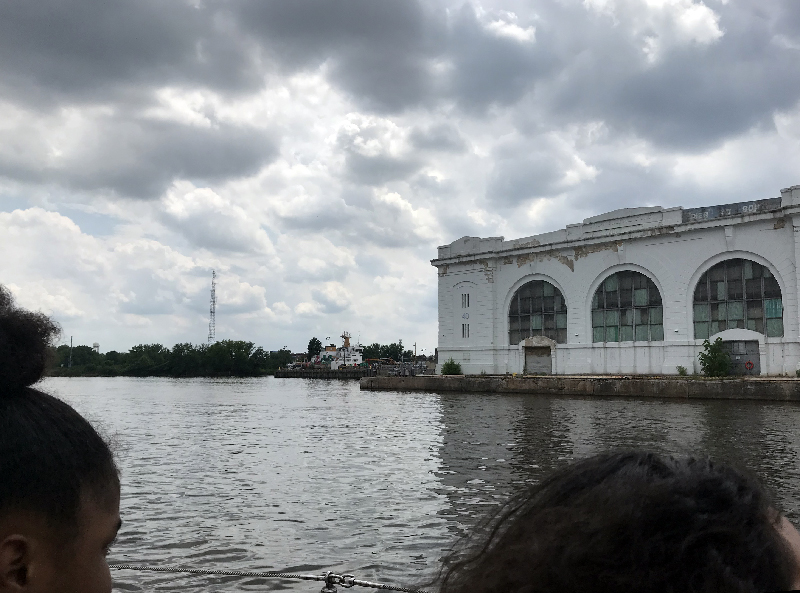
Just before we headed back across the river to end the sail in Camden, we got a close-up look at Pier 84, part of the Port of Philadelphia. One of many maritime piers we saw that day, Pier 84 is the premier entry point for cocoa beans into the U.S. There, the beans can be weighed, graded, and tested before transport to one of Philadelphia’s many chocolate manufacturers.
The North Wind Schooner/Gloucester City Sail’s dedicated staff and volunteers educate local students about the Delaware River and aim to spark interest in its future, and the opportunities it offers. I was on the first sail of the summer; several more were planned before it’s time to go back to school. While some experienced a little seasickness, they all seemed to enjoy an afternoon out on the water.

